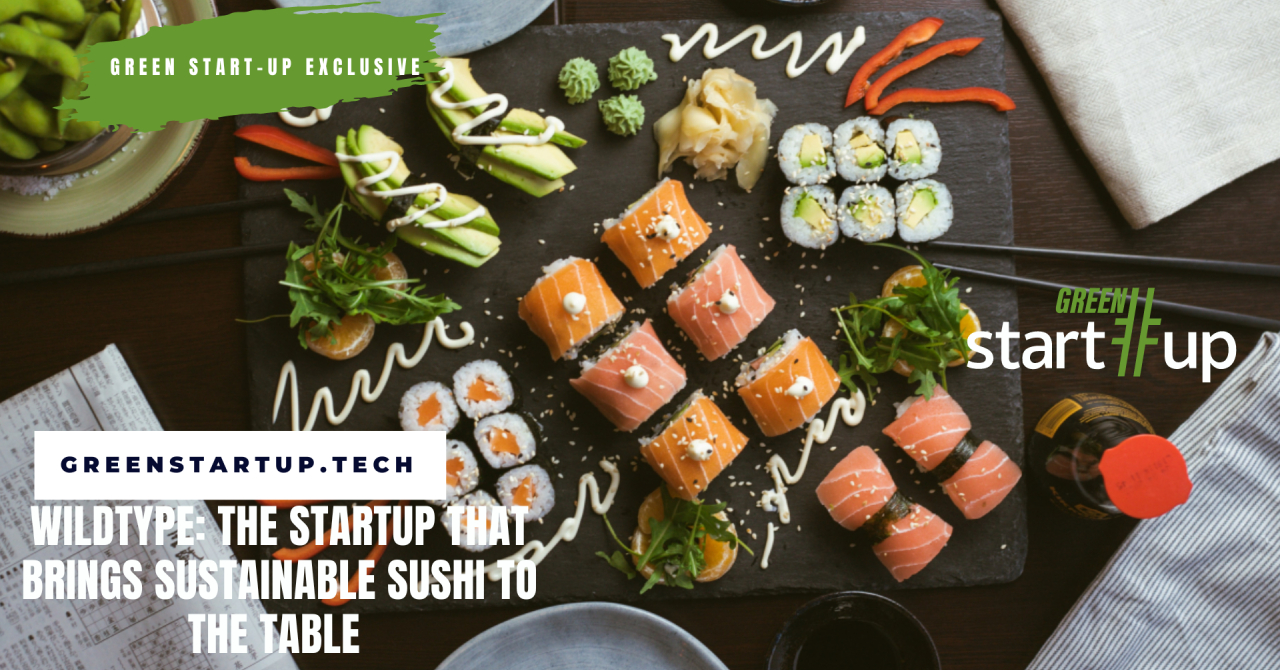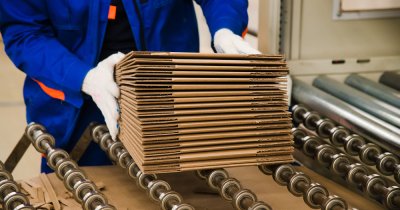The idea of cell-based food, which reduces the dependance on animal protein as we sourced it in the past, attracted many investors, among which were Robert Downey Jr. and Leonardo DiCaprio.
We had a chat with one of Wildtype's co-founders, Aryé Elfenbein, to find out how cultivated meat can save our food system and protect our ecosystems, at the same time.
Aryé, a cardiologist with Romanian grandparents who emigrated to the United States after World War II, told us that him and Justin Kolbeck, Wildtype's other co-founder and CEO and previously a diplomat, met in 2011 and after debating on which business idea they should stick with, they concluded that cell-based foods was the most meaningful one.
Thus, Wildtype came to life in 2016 and this project required the collaboration of many people that worked in very different fields, such as cell-biologists, chefs and tissue engineers.
But why cultivated sushi?
While being in his residency in Japan, Aryé started to question not only the sustainability of obtaining seafood, which is considered to be an important part of the nation's diet, but also its safety for the people.
"The contaminants in our seafood system I think it's just becoming more visible or people are becoming more aware of them now. I started to see that change when I was a student in Japan, in the way younger generations were speaking about seafood and the issues with sustainability", he told us.

There were other options out there when it came to cultivated meat, such as beef or chicken, but Wildtype's founders believed that sushi and fish in general was the best approach, as it would solve the overfishing problem and would prevent the population from being contaminated with dangerous elements such as mercury and lead.
How cell-based fish meat is cultivated
There are a few things Wildtype accounts for when cultivating the salmon alternative, such as the nutrients that are needed for the cells to evolve into fillets, for example, but also the temperature of the environment needs to be ideal, as well.
"What is the optimal temperature, what kind of nutrients, how often do we need to replace the nutrients, these were the type of things we needed to learn in the early days", Aryé explained.
Another critical part for the cells to actually connect and form chunks of meat is to have a structural platform where they can do so, which can be ensured by a plant-based structure, called a scaffold.
The challenges of cultivating sushi
As you would imagine, cultivating fish and meat in general in a food production facility isn't exactly easy and there were a number of challenges and finding the right nutrients that the cells needed in order to develop was among the first. Sugars, fats, amino acids, these are some of the things these cells need in order to evolve into meat products that we can then consume.

Then there was a question of enabling the cells to connect and form the meat product using the plant-based scaffolds and nailing the density of the product to resemble the one that people actually consume.
While Aryé believes that there will always be room for improvement when it comes to finding the perfect combination, he also thinks that "what we've created today is superior to other alternatives for seafood, but we don't want to be the alternative."
"We want to really be seafood that's just made in a different way", the co-founder of Wildtype shared with us.
Today, the company's cultivated meat products are "quite good", as per Aryé Elfenbein, but he also states that the development is still in its early days and input from chefs and consumers are really what will ultimately drive the direction of cell-based seafood.
In his opinion, the taste and the texture are two of the things that can still be improved to more resemble what real fish meat is like, but chefs and other food experts believe that currently, cultivated sushi is fairly convincing.
The taste and texture thing also depend on how the cell-based meat is to be consumed, Aryé told us, as for example, if it's put in a sushi roll, the chances of someone noticing it's not actual fish meat is slimmer, due to the complexity of ingredients.
The benefits of cultivating meat
There are multiple benefits when it comes to growing meat in a controlled environment, one of them being the fact that companies can cultivate select parts of a said animal, in this case salmon. This way, not only is the waste reduced, by eliminating parts that would not be used for cooking, but chefs have a readily-available source of food to work with without putting the extra effort of slicing the meat themselves.

Another thing, particularly for seafood, as Aryé shared with us, is that there are many contaminants that pose a threat to the health of the human population which consumes it, such as mercury, arsenic or cadmium. Cultivated seafood and meat in general don't have that problem, since the actual chunks are grown in a controlled environment from select healthy animal cells.
Then there's the sustainability aspect of things, as overfishing is still a serious issue in certain parts of the world and it can take a number of years for the fish population to recover after this kind of human intervention. To this, we can also add the fishing boats that pollute the environment and disturb sea and ocean ecosystems.
Is cultivated meat "vegan"?
This will heavily depend on why someone is vegan in the first place. If it's purely out of preference to not eat meat at all, then cultivated meat will probably not change someone's mind.
However, if it comes from associating meat with harming and mistreating animals, then cultivated meat could be the alternative that someone was looking for to enjoy animal protein, without harming a single being.
For Aryé, this can be explained in the way that "the main ingredient is salmon cells. It came from an animal four and a half years ago, so we hadn't had to kill an animal."
"We've had people come to Wildtype, who haven't eaten fish in their life and tried it for the first time ever and they don't know what salmon tastes like", the co-founder of Wildtype told us.

He believes that people who have become vegan for ethical reasons may be willing to try this alternative after they understand the process that goes into making cultivated meat.
Where can people get a taste for cultivated meat
Currently, Wildtype's team is still working on their cell-based food, but once the company receives approval from the Food and Drug Administration (FDA), its products will be available in some restaurants in the US, with the possibility to expand to other markets, as well.
In 2023, Wildtype officials hope to get the green light from the FDA so that they can start the production and distribution of the startup's cultivated salmon. At the same time, the team is also working on stepping up the production process in order to prepare for this, while also looking at ways to reduce cost, without sacrificing on the quality of the end product.
 Mihai - Cristian Ioniță
Mihai - Cristian Ioniță












Any thoughts?